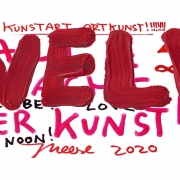- Developments of various retail formats - 20. December 2017
- Retail has to act – now - 13. November 2017
- Brands, power and myths - 29. August 2017
- Three new routes to brand management - 13. April 2017
The internet alone is no longer futureproof. Omni-channel shopping is the way forward – shopping on all virtual and analogue channels. However, only very few retailers have plans for this.
On the one hand: Online shopping is booming like never before. In the last year, turnover in Germany increased by 12.5 percent to almost 54 billion euros. A further increase of 11 percent is expected for this year. On the other hand: The stationary retail business is buzzing. The fashion industry, for example, had its best September in 17 years.
Apart from the fact that German citizens are keeping the economy running with a generous desire to buy, above all this means that: All the projections suggesting that we will only order things online within a few years’ time are false. The term omni-channel shopping, shopping via all channels, has long been an integral part of the retailer’s vocabulary – at least since the online giant, Amazon, began to infiltrate the real shopping world. Amazon has taken over the American organic food store chain, Whole Foods, and is opening its own supermarkets and book stores. For most retailers in Germany, it seems that setting-up an online store would be enough to be able to survive despite all the new and powerful competition from the web world. Unfortunately it’s not.
It is only a matter of time before Amazon expands to Germany with its physical shopping world. No company relentlessly infiltrates the lives of customers with its services and devices like this retail giant, with an annual revenue of 136 billion dollars – the trend is on the rise. And it is by no means the only online retailer that wants to settle in the shopping streets. Europe’s biggest online fashion retailer, Zalando, is also considering opening shops and the online furniture stores, Westwing and Home 24, have already done it.
They are no longer two business worlds that run side by side, the virtual and the real. They are now visibly overlapping. Successful e-commerce needs stationary trade – and vice versa. However, only those that manage to combine them in harmony will reap the benefits. “E-commerce is becoming more and more physical, accessible and offers a more intense experience, while physical trade is drawing nearer to the web in many ways: It is becoming more interlinked and data driven,” explained Dough Stevens, founder of the consulting company, Retail Prophet, whose client list includes names such as Coca-Cola, Disney and Google. “New technologies are speeding up the development of both channels. The line is becoming more and more blurry, and at some point, we will not be able to say with certainty whether the buying experience is digital or physical.”
Nowadays, customers are well-informed, demanding, price-conscious, impatient and lazy. They want to shop as they please. For traditional retailers, this means: They have to be involved in all channels that the customers may potentially use – shops as well as the traditional catalogue, plus online, mobile and dialogue all the way through to smart TV. However, not many have managed this so far. 90 percent of German companies do not have an integrally networked digitisation strategy. This could be their downfall when it comes to omni-channel shopping.
For many, it’s all about mobiles. For the largest players in the USA, the revenue share of orders via smartphones or tablets is already between 60 and 70 percent. Mobile phones are by no means just a shop window for retailers. “Speed and convenience are essential to a shopping experience and determine success or failure,” said Gerrit Heinemann, manager of the eWeb Research Center at Niederrhein University of Applied Sciences. For example, for retailers this could be an app that alerts customers when the product arrives and lets them know where there is a parking space available. And in the shop, the customer can pay for their goods via the app without having to go to the checkout.
If possible, they would like to have the goods conveniently delivered to their home in the evening, instead of dragging bags around. In some cities in Germany, Amazon has the Evening Express, Media and Saturn offering delivery within three hours, while Deutsche Post works on a Same-Day-Delivery standard for all others. Such operations also work on a small-scale, as the example of Kiezkaufhaus in Wiesbaden shows: Local retailers present their products on the website. The customer orders online and the product is delivered that evening by bike courier. 80 percent of the orders are food stuffs and there has never been a return.
Of course, the physical shopping experience – with an emphasis on experience – is completely lost. It is high time for an upgrade. Department stores and brand shops may be livening up their shop floors with gastronomy, but this can only represent a stepping stone. Tomorrow’s shop will offer completely new worlds of experience driven by the technological development. For example, a few years ago, Burberry established virtual mirrors in its flagship store in London: If you hold a piece of clothing in front of it, the mirror shows you what it would look like on.
The shop is a showcase for innovations. This will mean that it will be possible to present products in the future that are not yet on the market, but that the customer can alter to their needs by means of configuration. In addition to virtual reality, augmented reality will also be introduced – the new iPhones have this technology. Ikea, for example, is working on an app that transposes furniture into images of real environments on your mobile phone.
A side effect that should not be underestimated related to this type of new shop concept is the required investments, but cost savings in the long run. As, instead of 400 square metres, 100 is enough for the haptic experience, the web takes care of the rest. The products do not have to be stored in an expensive warehouse in the city, but are delivered from the outskirts by courier. This considerably reduces the cost of rent, a big chunk of every retailer’s outgoings. And it draws new players to the inner cities – from the e-commerce giants to car dealerships, that introduce their models virtually, yet life-size and in 3D. Cities are becoming more colourful.
The future institute in Frankfurt, a think tank of various scientists, is going even further. The shop is becoming a place for open innovation. This means: Buyers and sellers become equal partners, not only in sales, but also in the manufacturing process, product range selection, product design and marketing. At Community Retail, customers help design the products. It’s worth it: In Japan, the retailer Muji investigated whether there are differences in the sales figures of furniture if they were designed by customers or if they came from their own design centre. Result: In the first year after the product launch, the sales revenue of the user-designed products was three times higher than that of the products from the design house. Over the years, this effect has increased.
This is all based on customer data – the more and the more exclusive, the better. This means that completely new business models can be created. The Otto group has launched a first approach in this direction with the About You portal. Based on all the data collected, a custom-made web shop is created for each individual customer. The vision for the future is to have orders already prepared before they even arrive.
The future of trade is dependent on technological understanding, but in particular on new ideas. Amazon has registered 1662 patents in the last year.
This page is available in DE




